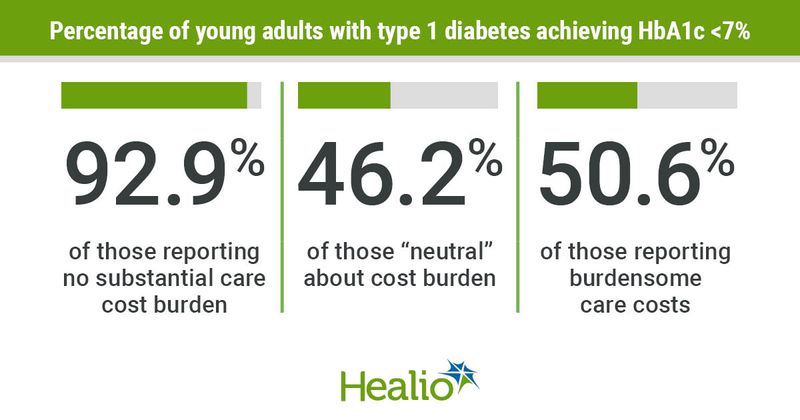Costs associated with type 1 diabetes affect physical, emotional health of young adults
Rise in diabetes costs, including increased insulin prices, substantially influenced physical and psychological health for young adults with type 1 diabetes, according to survey results published in Diabetes Technology & Therapeutics.
“While the exponential rise of the cost of insulin over the last 20 years has received significant publicity and political attention, diabetes costs come from a variety of sources, including insulin pump and continuous glucose monitoring supplies, glucagon, blood glucose and ketone test strips, co-pays for medical appointments and the cost of lost productivity due to the burden of diabetes management,” Rebecca J. Vitale, MD, MPH, a fellow in the pediatric, adolescent and young adult section at the Joslin Diabetes Center and the division of endocrinology in the department of medicine at Brigham and Women’s Hospital, Boston, and colleagues wrote. “Gross per-person spending on health care for people with type 1 diabetes increased from $12,467 to $18,494 per year between 2012 and 2016. This 48% increase was largely driven by a 99% increase in the cost of insulin.”

This cross-sectional online survey was administered to 287 participants (mean age, 24 years; 78.1% women) aged 18 to 30 years with type 1 diabetes and English fluency. Survey prompts included demographic and clinical questions along with the original Problem Areas in Diabetes-Emerging Adult (PAID-EA) survey and the Center for Epidemiologic Studies Depression Scale (CES-D). The PAID-EA scores the emotional burden of living with type 1 diabetes specific to the emerging adulthood developmental stage, with higher scores indicating more diabetes distress.
Overall, participants had a mean self-reported HbA1c of 7.1%, with 89.9% reporting CGM use and 78% reporting insulin pump use in the last month. Most respondents (89.5%) reported that they “agreed” or “somewhat agreed” that they worried about the cost of diabetes, with no response differences by sociodemographic or diabetes-related factors, such as sex, age, diabetes duration, race/ethnicity, student status, annual income, insurance status, CGM use or insulin pump use.
A greater proportion of participants who did not report diabetes costs as a substantial burden achieved an HbA1c of less than 7% (92.9%) compared with participants who were neutral (46.2%) or who said costs are a burden (50.6%; P = .004), according to the researchers.
In the open-ended section of the survey to which 87% of participants responded, diabetes cost was also noted as the most frequent worry followed by worry over insurance coverage.
“Many diabetes-related professional societies, such as the Endocrine Society and American Diabetes Association, have advocacy sections to help clinicians who are interested in becoming more involved,” the researchers wrote. “In addition, the T1International #insulin4all campaign has local chapters in most states and can help support people with limited advocacy experience. The entire diabetes community can use their voices for such change.”
